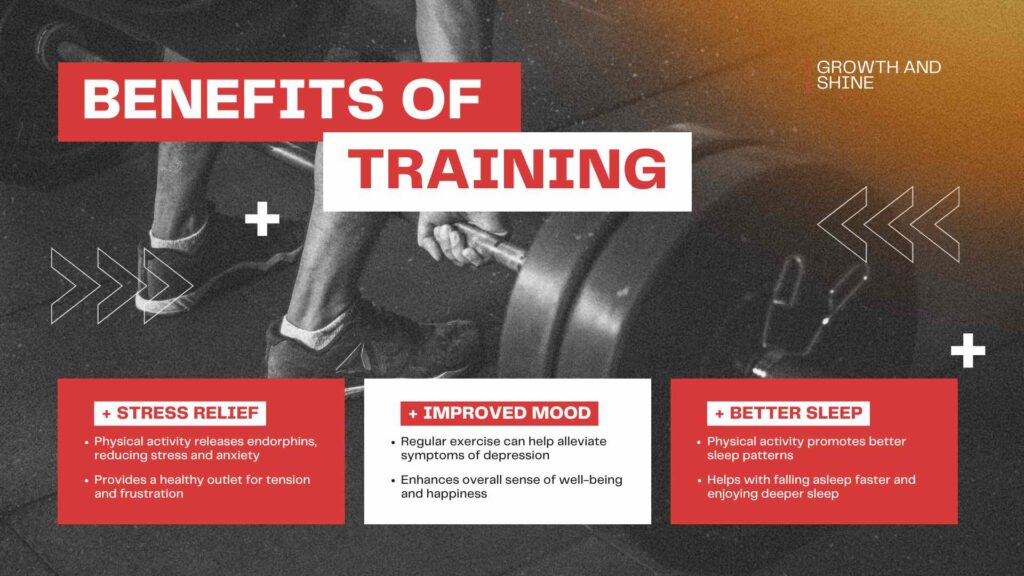Functional strength training has been one popular term that is often used in fitness circles, and that is for the right reasons! When the objective of the traditional strength training is building muscle size and strength, functional strength training is all about those movements resembling the everyday activities, which allow muscles to execute their tasks more effectively.
This post gives a detailed explanation of what functional strength training is, its benefits, differences between functional and traditional strength training, and how to fit it in your workout schedule. We will also connect you with the relevant workouts and the necessary tools like adjustable dumbbells, calorie calculators, and others.
Table of Contents
What is Functional Strength Training?
Functional strength training is a program where one learns to use his/her muscles in sets so that they work in harmony, thus enhancing coordination, balance, and stability. These workouts involve exercises that mimic such actions that you usually do during your daily life including bending, twisting, pushing, pulling, and lifting.
For example, moves like chair squats, leg lifts, and good pertormances mimic activities like bending over and grabbing an object, climbing stairs, or sitting and standing. The ultimate objective is to be strong and coordinated so as to decrease the chance of any injury and also do not confront hassles in daily whether swimming or what not.
Related Articles:
- HIIT Workouts at Home: The Best Equipment and Exercises
- Unleashing the Power of the Sportneer Adjustable 10-Pound Dumbbells
Benefits of Functional Strength Training
Activities like functional strength training yield you plenty of advantages, such as strengthening not only your muscle mass but also your overall health.
- Enhanced Daily Movements: It speeds up the doing of such daily chores as carrying groceries, kids, and climbing stairs around.
- Core Stability Improvement: These exercises work out not just one but many muscle groups altogether, and primarily, core muscles, thus, it is responsible for better balance and posture.
- Prevention of Injuries: The technique of strengthening the movement patterns that are functional helps the prevention of getting injured in daily life as well as in workouts.
- Increased Joint Mobility and Flexibility: It is these functional lifestyle movements that ensure that your body is not rigid, being able to move freely in a wide range of directions.
- Exercises that Work Quickly: Many functional exercises are those that engage different muscles at once. That is why they are the best for a brief total-body workout.
Related Tool:
- The Calorie Calculator can be tried by going to the fitness trainer. Using this tool, energy usage can be tracked throughout

Equipments Used for Functional Strength Training
Functional training does not require a top-of-the-line gym. These are the simplest, most important pieces of equipment that can substantially enhance your workout:
- Adjustable Dumbbells: It’s great for squats, lunges, and rows with the ability to adapt to a lighter or heavier resistance level. See also our story about Sportneer Adjustable 10-Pound Dumbbells.
- Kettlebells: This equipment popularizes exercises such as kettlebell swings or deadlifts that work on multiple muscle groups.
- Resistance Bands: A new resistance to the loose-muscle exercises and a grace to the tight-muscle exercises as well as to the mobility ones is the best development concept of these tubes/tubes. For expert advice , check out our article How Resistance Bands Can Enhance Your Fitness Routine.
- Medicine Ball: A dumbbell for drills like medicine ball slams that activate all parts of the body.
- Balance Trainer: It’s meant for exercises like lunges or squats which are made easier by providing stability and balance.
Related Articles:
- Affordable and Best Home Gym Equipment for Every Space
- Top Basic Weight Bench for Home Gym: Affordable & Adjustable
Functional Strength Training vs Traditional Strength Training
Both of them are focused on causing you to gain strength; however, they are differentiated by the approaches. Here is a juxtaposition of functional strength training versus traditional strength training:
| Aspect | Functional Strength Training | Traditional Strength Training |
|---|---|---|
| Focus | Enhances the movement patterns and the real-life functional movements | Emphasizes the isolation of the muscle and enhancement of the strength of the muscles in a specific group |
| Exercises | Squats, lunges, deadlifts, kettlebell swings | Bench press, bicep curls, leg presses |
| Equipment | Dumbbells, kettlebells, resistance bands, medicine balls | Barbells, weight machines, dumbbells |
| Goal | Enhance everyday movement and total control | Build muscle mass, strength, and endurance |
| Core Engagement | Every time an individual does an exercise, the core is trained | When the core is inactive or engaged incorrectly during a certain exercise |
| Injury Prevention | Reduction of the risk of injury by directing the focus to the movement patterns | The chance of injury may increase due to the poor form and heavy weight |
| Flexibility & Mobility | Develops the flexibility and mobility by the whole body moves in the directions it is intended to | It might limit flexibility because it mainly includes muscle contraction |
The Best Way to Construct Functional Strength Training Schedule
In case you want to include functional strength training in your schedule, the following is a sample workout routine that you can try at home:
Warm-Up (5-10 minutes)
- Jumping jacks or jogging in place
- Stretches, such as arm circles or leg swings
Workout (3 rounds)
- squat (15 times): Get more of your lower body and glutes by repeatedly doing exercises similar to that of sitting down and standing up.
- Push-ups (10-12 reps each): Use your core and upper body to build up push strength.
- Walking Lumbars (12 reps each): Delve into walking, or climbing stairs as well for your legs to get strong in this exercise.
- Kettlebell Swings (15 reps): Draw your hamstring, glutes, and core to the task using this tremendous motion.
- Planks (Hold for 30 seconds): Stand up straight and don’t move your posture and balance for a while (then repeat this for the other side of your body).
CooL Down (5 minutes)
- Static Stretching is that you direct to primary muscle groups used in a particular workout.

Functional Strength Training for Beginners
If you’re new to functional training, it’s important to start slow and focus on form and control. Here are a few tips:
- Start with Bodyweight Exercises: Engage in regular bodyweight exercises, such as squats before moving on to weighted exercises.
- Incorporate Balance: Functional exercises primarily target balance, so challenge yourself with one-leg exercises over time. These exercises may entail blocking your ears and being single-legged to help with body balance coordination or practice exercises that only help one-leg stabilization.
- Focus on Core: Your inner is greatly involved in performing functions, which is why doing exercises like planks and Russian twists can help with strengthening the core.
As you progress, start adding weights and equipment to increase resistance and challenge your muscles further.
First, to train yourself for functional strength, do more simple exercises and then add some advanced movements.
Further Reading
If you’d like to read more about functional strength training and what advantages it may have for you, here are a few additional resources:
- PubMed Central’s research on Functional Strength Training
- Journal of Strength and Conditioning Research.
Functional Strength Training for Advanced Athletes
Functional strength training can be made more challenging for individuals with more experienced trainers by adding weight, stability, or changing the dynamics of the exercises. By wearing resistance bands during squats and using a balance trainer for lunges in different sessions you can also do them as progressive exercises. You can also engage in a multi-joint operation to boost the efficiency of the workouts, e.g., squat-presses. An athlete can do such movements as a part of his other workouts that target body areas that can be done separately or together as a part of one overall set of exercises depending on the trainer’s intentions.
Related Articles:
- Cardio Exercises at Home: Your Ultimate Guide to Boosting Fitness
- Effective Calisthenics Workout Routines for Everyone
- The Ultimate Guide to Circuit Training Workouts: Benefits, Weight Loss
- How Resistance Bands Can Enhance Your Fitness Routine: Expert Advice
FAQ’s
What is functional strength training?
Surely, the term functional exercise has been put on the map via various fitness options that prepare one’s body for functional everyday movements through specific movements like squats, lunges, push-ups using the integration of coordination and balance.
What is considered functional strength training?
Functional strenght training comes with exercise units which enhance day-to-day functions, placing emphasis on muscle coordination, balance and stability.
What is functional strength training on Apple Watch?
To be specific, functional strength training on Apple Watch is an activity that introduces an eye-tracking system which records continuous motions done with the fitness device that are presented as real-life activities and are aimed at coordinating and increasing activities of strength in the activities of daily living.
What are some examples of functional strength training?
Such mishaps shall include squats, lunges, deadlifts, and kettlebell swings which target better real-world activities like lifting weights, carrying heavy objects, and bending.
How does functional strength training burn calories?
Functional training is focused on doing group exercises that involve all body parts simultaneously, which in turn would accelerate the rate of caloric burn than if you were to use isolated exercise for strength.
What counts as functional strength training?
Functional strength training is, therefore, doing exercises in the gym, doing yoga, or doing absolutely anything that requires physical efforts such as lifting, pushing, pulling, walking, running, or simply gymnastics.
What is the meaning of functional strength training on Apple Watch?
The term on the Apple Watch is used to mean activities that help improve your movement and thus make your daily life and exercises easier. Some of the exercises related to the movements are squats, lunges, and dynamic full-body exercises.
How is functional strength different from the traditional way of strength training on Apple Watch?
The functional strength module on Apple Watch tracks exercises that simulate normal activities, and at the same time, the traditional type of strength training requires specific workouts that build muscles on their own.
Can beginners do functional strength training?
Yes, it is true that one can perform functional strength training, with such modifications as beginners need, as easy as 123. They can initiate with basic functionalities and regulate the energy that they can endure with respect to their strength and coordination.


3 comments
Comments are closed.